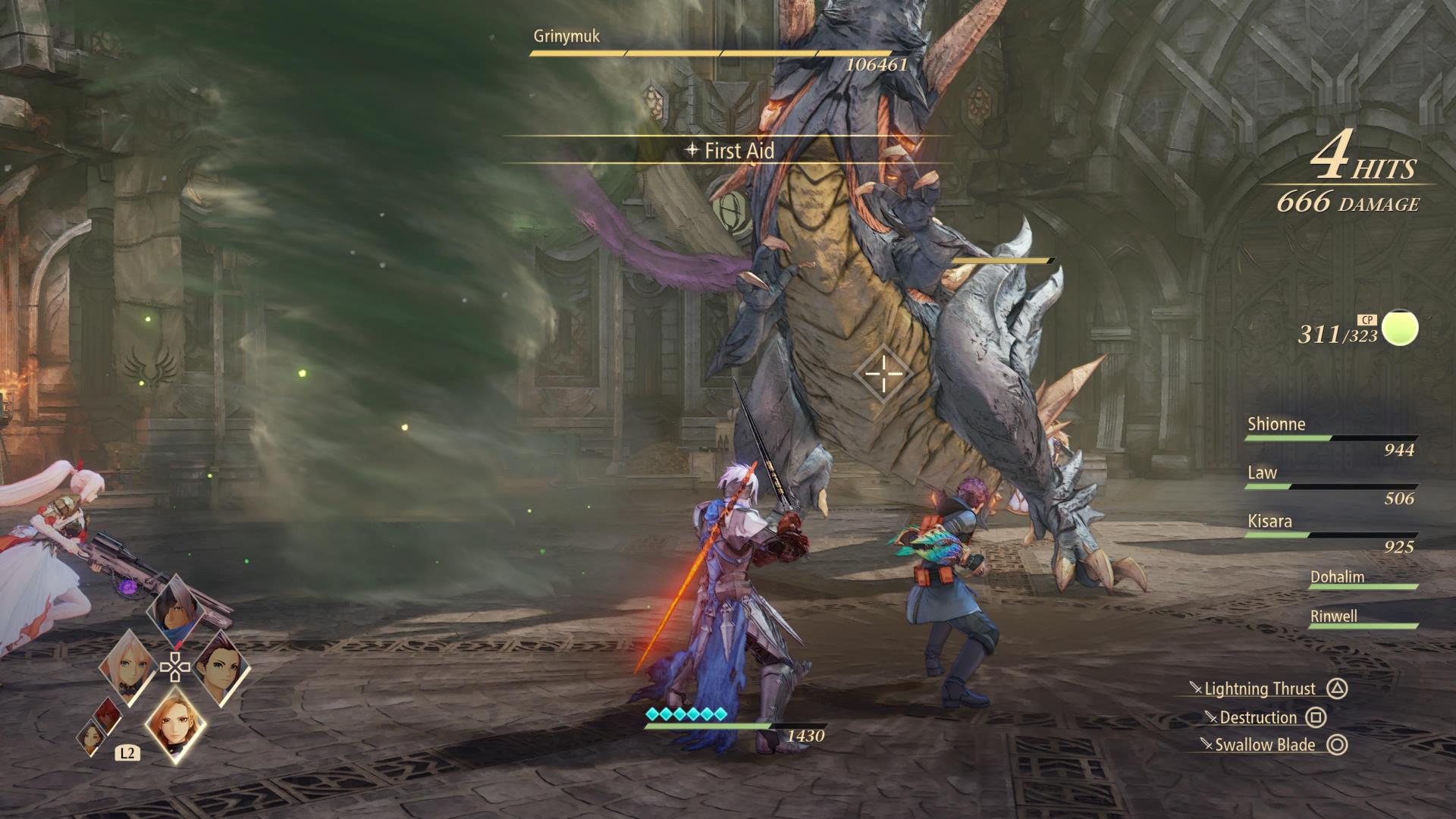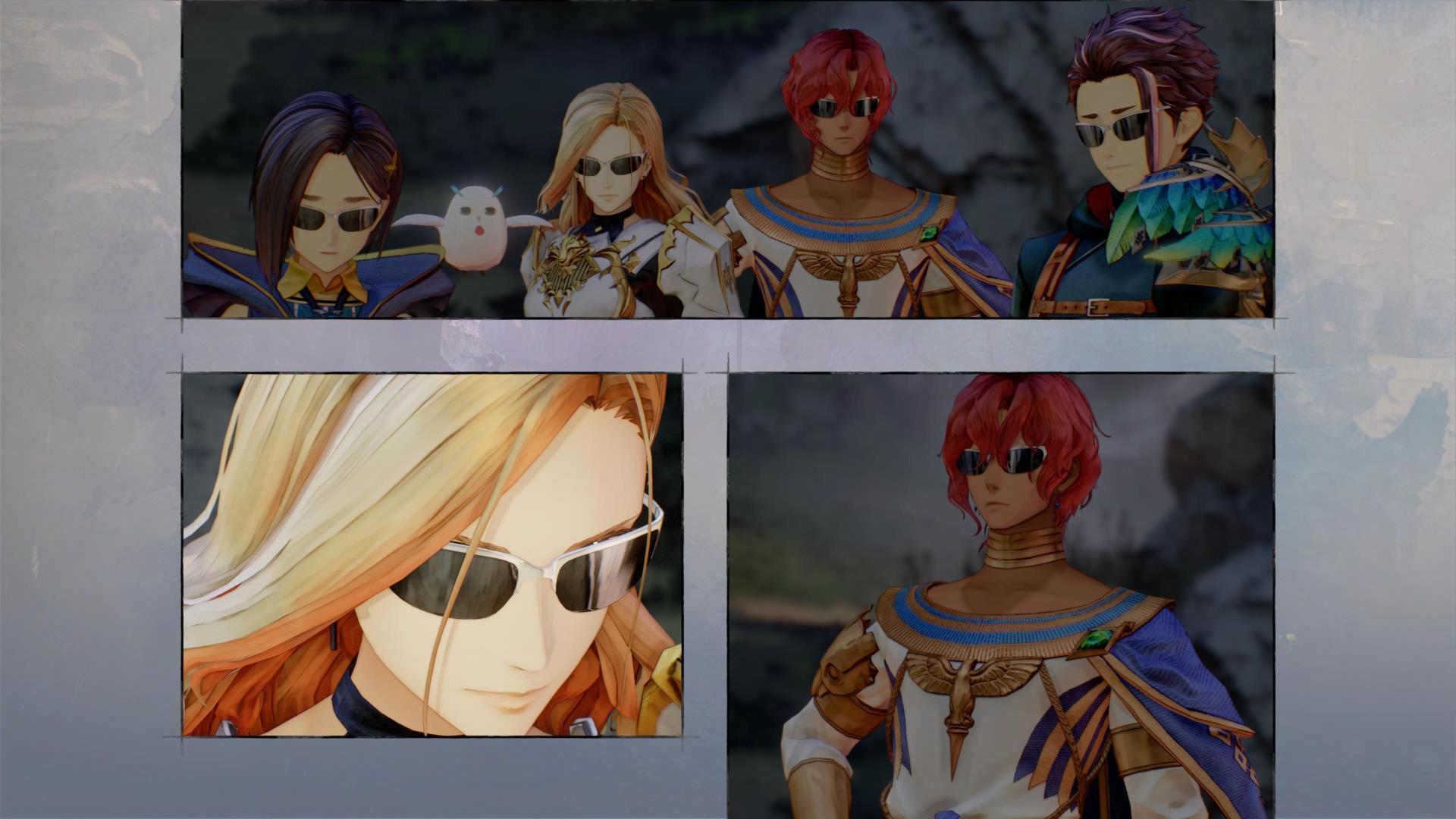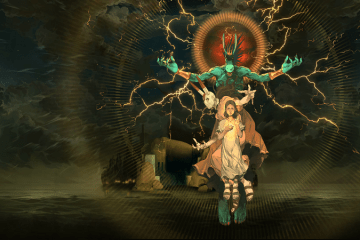You can find Seasoned Gaming’s review policy here
When WB announced that James Gunn would be directing a Suicide Squad movie, I simply nodded my head and moved on with my life. There are various constants when hiring directors like James Gunn to direct a project. You know what to expect: charismatic characters, humorous banter, and explicit violence (sans Guardians of the Galaxy). This isn’t explicitly tied to James Gunn either, as plenty of directors are known for their unique styles in the same way I know exactly what I was getting with Bandai-Namco’s latest epic: Tales of Arise.
What I didn’t expect were some serious jaw-dropping moments where I looked around my apartment and wondered, “did anyone else see that?” While Tales of Arise embraces the darker side of sociopolitical ideology, it does leaves more to be desired. The game takes the familiar Tales formula and makes slight changes to it while keeping the essence intact. Instead of committing to a balancing act consisting of several different complex systems, Tales of Arise simplifies mostly everything to create a more cohesive game experience for both new and seasoned gamers. It is a textbook lesson of “keep it simple, stupid.”

Despite its minimal 35+ hour runtime, I wanted to see more direct results and reactions to the monumental story elements. There is a huge imbalance of narrative concepts where the first 80% of the game is spent setting up these grandiose ideas only for the last 20% to spout exposition at you till you’re blue in the face. While the story starts out incredibly strong, it becomes more and more complex as it goes on. It is easy to follow, but there are some small elements that made me ponder the way the plot flowed, as they all delivered in-your-face clues to what is going on. Eventually, Tales of Arise becomes predictable in general themes while the main story begins to shift into the typical JRPG tropes.
Combat is smooth as butter, perhaps the smoothest the series has ever had. Free-roam controls with a slight lock-on mechanic can be altered to fit your playstyle, which is great when handling many enemies. While other games presented a 3D environment that flattens to a 2D concept within the battlefield, Tales of Arise gives you full range. When trying to attack specific enemies, I did notice the targeting reticle switch to a different enemy, making my chosen character run off in a different direction or swing the camera around, disorienting me.
Each character has a special ability that is useful in combat against specific enemy types and actions. Whether they are in your party directly or sitting on the sideline, each character ability is always accessible at any time they can perform said action. Alphen and Shionne have pure damage abilities while characters like Rinwell interrupt enemies from casting magic. These abilities recharge over time, so you can’t use them repeatedly. You must pick and choose the optimal scenarios, prioritizing when to unleash a torrent of flames with your fire sword or perhaps hold-off till the next fight.

When you damage an enemy enough and perform multiple combo attacks, a D-pad prompt will appear, allowing you to press one of the buttons to perform a devastating move involving another party member. These are mostly randomized, but always end in an explosion of color and light accompanied by some cheesy dialog that really completes the whole “anime” style package.
The healing mechanic has also been simplified as well. You still have the stereotypical cliche character that you’ll never take out of the party for the duration of the game. Instead of managing a single character’s MP, you have a pool of points that is shared through the whole party. These points called “CP” allows characters to perform these healing abilities and double as an exploration tool. You can spend CP to break down barriers present when exploring various dungeons, usually resulting in obtaining useful items and gear. This risk/reward concept makes you choose between healing or getting a nice piece of new gear or an important consumable item, but with micro-transactions, you can circumvent this entire system.

Each character gains experience points and SP at the end of each battle, allowing you to level up and invest in various upgrades, respectively. While leveling-up tends to result in better stats, SP works on a different skill system. Large skill nodes have five attributes tied to them, so if you upgrade all the attributes, you get a special completion bonus. You’ll unlock these nodes as time goes on and by performing specific tasks within the game. Sometimes a faded node will show up and tell you how to unlock it. My only gripe with this is how you aren’t rewarded a ton of SP from each battle, so you need to take advantage of other means so you can progress, whether that be doing side-quests or partaking in some micro-transactions.
There are other minute changes that makes combat a delight. You can swap characters mid battle, choose who to control whenever you want, and even make changes to your loadout to take advantage of enemy weaknesses. This is essential when trying to dispatch enemies as quickly as possible, especially towards the end of the game where some bosses can be quite troublesome.

Weapons, armor, and accessories are also streamlined into a basic format. Like in many beloved RPGs of the past, when you go into a new area you can buy armor and equipment. Although, weapons and accessories can only be crafted using various minerals, monster parts, and previous weapons (so don’t sell things you don’t need). As for consumable items, your inventory can hold a maximum of 15 of each, making it quite challenging during long dungeons, and can also be circumvented via micro-transactions. Hopefully by now, you can see the pattern.
While all these features are wonderful, there is a problem that hangs over Tales of Arise like a dark cloud: micro-transactions. They aren’t too intrusive, after all we live in a day where ads are tossed in your face the second you turn your PlayStation or Xbox on (you also see it all over Steam as well folks). When you open some menus and rest, you’ll see a notification about potential DLC purchases, but I didn’t find them to be as meddling as other titles that actively attempt to place an ad wherever they can. What the micro-transactions offer is a whole other beast.

As you hopefully noticed by now, almost every single aspect can be altered by purchasing these micro-transactions. In the name of “integrity,” I have purchased two of these packages to see how much of an impact they make on the game. These packages offer a ton of “gald” with in-game vendor discounts, bonus SP, rare items to increase character stats, and reducing the material upgrades for weapon crafting down to 1 item instead of 2 or 3. It doesn’t end there. An additional package offers inventory expansion from 15 maximum of each consumable to 99, changing the very fabric of how this game performs.
EXP bonuses and cosmetics also fill the game to the brim, making me take a step back and realize that Tales of Arise has a huge issue that can’t be glossed over. By the time I reached the end of the game, the power gap between my characters and the enemies started to become more prevalent, making me feel as if the only way to get passed these enemies is to indulge in these micro-transaction packages. You don’t have to buy into them by any means, but when you are facing off against some high-level bosses, you’ll wish you had a little help. The choice then becomes to pay or grind, and that is not a great design concept.
Tales of Arise is pleasing to look at when it comes to graphics and overall design. From characters to the environments, everything is finely detailed with intricate details designed to convey specific themes from the harsh hot planes of Calaglia to the ice cold tundra of Cyslodia; every realm is finely detailed. Even the monsters send a message to the player of what they are up against. Due to the character mechanics, there are only a handful of specific character designs with palette swaps. This is designed to help you draw the lines from the enemy type to the ability and counterattack to help streamline combat.

Unfortunately, I noticed a lot of character and texture pop-up while exploring the more open environments, which feels synonymous with the Unreal Engine. Figures in the not-too-far distance would appear up and disappear randomly. Other scenes I noticed a lot of aliasing when the camera focused on some important details. Generally, there isn’t much more to discuss when it comes to the visuals besides how amazing the various effects are.
Sound direction is very strange. There are somber moments within the game that are accompanied by loud dolorous horn blasts, as if a battle is occurring. These odd musical cues sometimes match while other times it displaces the entire scene, like putting Yoko Ono on the main stage at Ozzfest. Otherwise, the various yells, screams, and slashing attacks sound nice and crisp.

The voice acting is absolutely superb, with each voice standing out with a ton of emotion. Each voice actor nailed the mood and general attributes of their characters. While JRPGs are known for their elongated moments of exposition, there is so much talking that it started to feel more like a Hideo Kojima game. Characters will reiterate points repeatedly, ad nauseum. It almost felt like someone wrote a script just to hear the voice actors talk. This becomes more prevalent towards the end of the game, where I spent seven hours watching characters talk about things we already know, or at the very least, predicted.
The skits and plot moments become more bearable with the outfit system. You can dress up the characters with various costumes found in-game and via micro-transactions, which they wear during the entirety of the game minus anime cut-scenes. This makes the game and conversations quite humorous and tolerable during the worst times. My entire squad all had on sunglasses, which made a ton of serious moments kind of hilarious.

Warning: Here Be Spoilers
Without spoiling too much, I can’t simply review this game without talking about story elements. Tales of Arise is a narrative-driven game whose quality hangs on how the story evokes political intrigue as well as the personality of its characters. While the story begins as a simple tale, it begins to blossom into something more intricate and ambitious but not to a point where it loses you completely. As I said before, the game falls into the same tropes of all JRPGs that conclude with your party killing a god.
Three hundred years prior to the start of the game, people from an off-world planet named Rena invade the planet Dahna, taking over the entire populace. This turned every Dahnan into a slave for the Renan people. Dahna’s land was split up amongst several Lords who implemented their own form of governance over their people with fascism being a major pivotal aspect. Society is constantly at ends due to this conflicting nature of the two “races,” and it is one of the most important elements to know when it comes to understanding character motivations and arcs as well as general theme progression.

Tales of Arise happens to focus on the concept of trust, friendship, and compassion, while toying around with slavery to draw the line deeper between the Renans and Dahnans. Despite the content, it never follows through with the results of some of the most important twists within the story, that being how everyone is literally the same, which is entirely predictable from the start. This is such a huge revelation to the characters, but that information isn’t shared amongst the masses. Learning that the last several centuries has been built on a lie has heavy implications that could have changed the landscape of the game and presented a much different climax and conclusion than the cliché ending that was handed to me.
These painfully clear elements begin with the first character we play as, Alphen. He is a Dahnan slave that cannot feel pain and has amnesia (I mean, who doesn’t in these JRPGs). He meets Shionne, a Renan who is the victim of a curse called “thorns” which damages anyone who touches her (short of killing them). Shionne’s thorns acts as a physical and metaphorical reason to keep everyone in the game at her arm’s length. This is the peanut butter and chocolate combination of gaming concepts I have ever seen, and the relationship between these characters is the same predicable ideas rehashed a thousand times before, except for one aspect: Shionne is kind of a jerk. Shionne wants to kill all the Lords in hopes to help get rid of her thorns and only helps the party because it is in her best interest. She will tell you this with the enthusiasm of a CrossFit trainer, hammering it into your skull so much so you don’t forget it.

I found each character to be charming in their own way. Rinwell the mage, Law the fighter, Dohalim the Lord turned rebel, and Kisara the knight are all wonderful characters with tons of depth to them even if you don’t watch the skits. While each character bears witness to the problems that surround them, they still rise to the top and exude so much unique personality that it makes them incredibly believable and not so far-fetched. In a way, I will find these characters to be more memorable than most of the other games I have played within the last couple of years.
I do want to touch on the skits briefly, as there are a ton of these little moments where we learn about what makes the characters tick. While characters will talk as you venture out into the wilds, Tales of Arise begs you to sit down and focus on learning about how Kisara loves to fish and cook, slowly becoming the party’s mom. You’ll learn how Rinwell comes from a line of mages and how hungry Shionne is all the time (big mood there). Characters are believable because of these skits, and the game really wants you to explore these little slices of each of these character’s lives. This is where you learn the most about these characters and their struggles with the adventure. There are a ton of them where it becomes so overwhelming that it stops the momentum of the game itself. Fans of the series will most likely love these segments as they are a staple of the Tales franchise, but new fans might find these annoying.
Tales of Arise might be one of the first major anime styled games worthy of your time. While the story needed a bit more work, the combat is amazing, and the characters are just lovely. Rolling credits felt as if I was saying a heartfelt goodbye in the same vein as an ending to a great TV show or comic book, no matter how predictable it is. Micro-transactions aside, I think Tales of Arise is worth your time, money, and patience. Lets hope that Bandai-Namco is able to deliver an experience like this with their next title.




